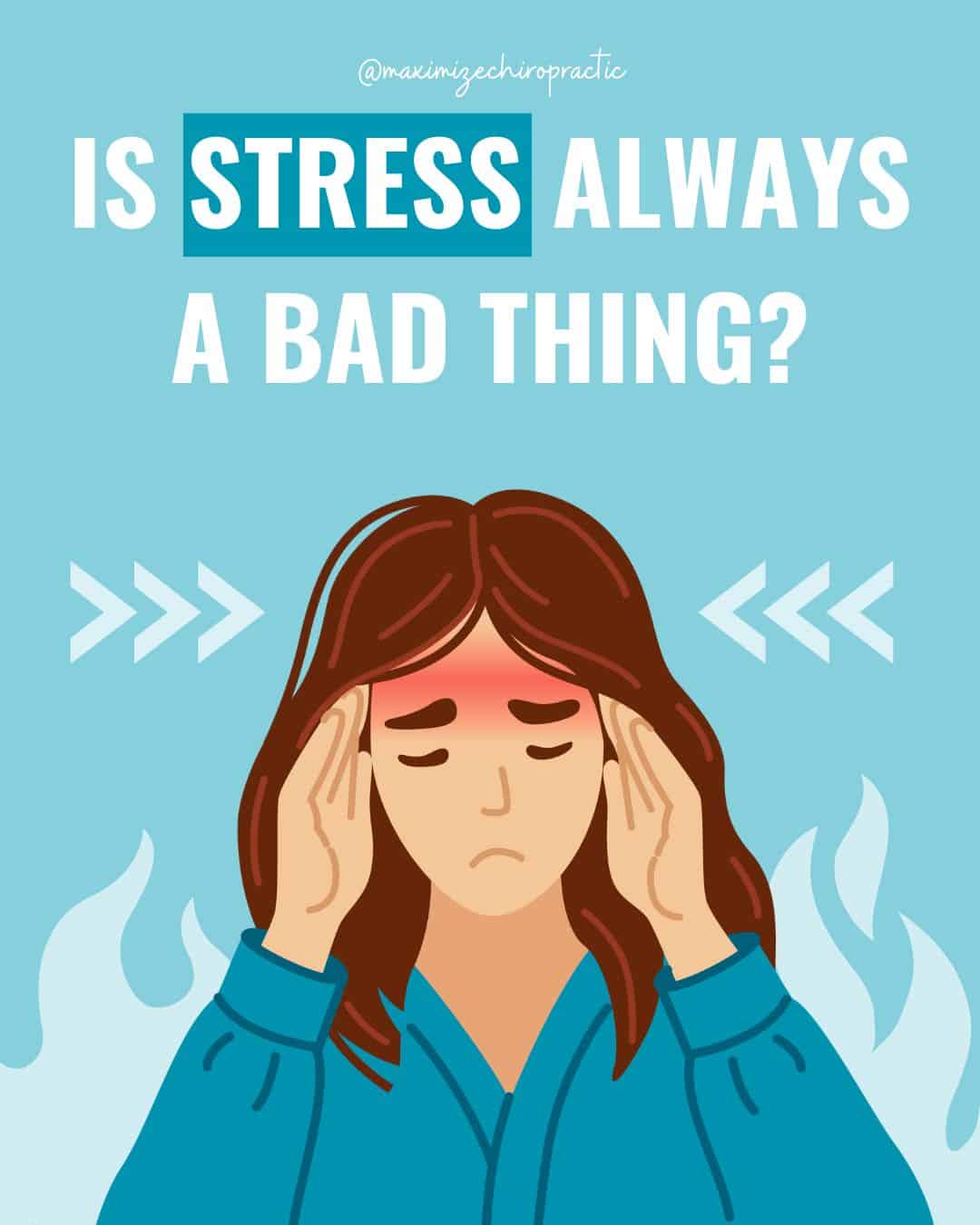As a parent, watching your child meltdown before school, struggle with sleep, or show signs of anxiety can be both heartbreaking and frustrating. You’ve likely wondered if the stress they’re experiencing is harming their developing brain and body. You may have noticed that when your child is under stress, other health challenges emerge—digestive issues, focus problems, emotional outbursts, and immune system challenges.
You’re right to be concerned.
Research shows that 35% of American children experience stress-related health problems. Chronic childhood stress has been linked to numerous behavioral and emotional issues, including PTSD, depression, and aggression.
But here’s what might surprise you—not all stress is harmful. Certain types of stress are not only beneficial but essential for your child’s neurological development and resilience.
The conventional medical system often overlooks this crucial distinction and the profound connection between stress and your child’s nervous system regulation. At Maximize Chiropractic, we’ll talk about the neurological impact of different types of stress on children and how a nervous system-focused approach can help your child develop a healthy response to life’s challenges.
What is Stress?
Stress is far more than just feeling overwhelmed—it’s a complex neurological response that involves your entire body. When your child experiences stress, their brain triggers hormones and physiological changes designed to help them cope with perceived challenges.
From a neurological perspective, stress activates the Autonomic Nervous System, which has two main branches:
- The Sympathetic Nervous System—the “gas pedal”—triggers the fight-or-flight response, releasing stress hormones like cortisol and adrenaline.
- The Parasympathetic Nervous System—the “brake pedal”—promotes rest, digestion, and regulation, helping the body return to a calm state.
This stress response evolved as a survival mechanism. When functioning properly, this system activates quickly when needed and then efficiently returns to balance. However, in today’s world, children’s nervous systems often become dysregulated—stuck in “gas pedal” mode without enough “brake pedal” activation.
So, is stress always bad? What many parents don’t realize is that stress itself isn’t inherently good or bad—it’s the type, duration, and intensity of stress, along with your child’s neurological ability to respond and recover, that determines whether stress will be harmful or beneficial
The Neurological Roots of Stress
To truly understand stress and its impact on your child’s health, we need to look deeper at what’s happening in their nervous system. The brain and nervous system serve as the body’s master control center, coordinating every function from heart rate to emotional responses.
When your child encounters a stressor, their brain perceives this as a potential threat. This triggers the hypothalamic-pituitary-adrenal (HPA) axis, which floods the body with stress hormones. These hormones activate the sympathetic “gas pedal,” preparing the body to face the challenge.
In a balanced nervous system, once the stressor passes, the vagus nerve—a key component of the parasympathetic “brake pedal” system—sends signals to restore calm. The vagus nerve helps slow the heart rate, lower blood pressure, stimulate digestion, and release calming neurotransmitters. This nerve plays a vital role in regulating inflammation, immune function, emotional processing, and even social connection.
However, when children experience chronic stress, it can impact many functions of the neuroendocrine (neuro-hormonal) system, resulting in nervous system dysregulation. This disrupts the balance between the sympathetic and parasympathetic systems, leading to dysautonomia. When this happens, the body gets “stuck” in fight-or-flight mode, with the vagus nerve’s calming influence suppressed.
Children are particularly vulnerable to these neurological effects because their nervous systems are still developing. The over 1 million neural pathways formed every second during early childhood will shape how they respond to stress throughout their lives.
Good Stress vs Bad Stress
Not all stress affects your child’s nervous system in the same way. Understanding the different types of stress and their impact is crucial for supporting your child’s health.

Beneficial Stress (Hormetic Stress)
Hormetic stress is short-term, moderate stress that strengthens the nervous system—much like how exercise challenges muscles to grow stronger. This “good stress” temporarily activates the nervous system, giving it a chance to rise to a challenge and then return to balance, thereby building neurological resilience.
Examples of Beneficial Stress in Children
For children, this kind of positive stress may include:
- Learning new skills like riding a bike or swimming
- Navigating new social situations or making new friends
- Engaging in sports or active play
- Solving puzzles or tackling complex schoolwork
- Experiencing manageable emotional challenges
These types of experiences strengthen neural pathways, enhance vagus nerve function, and help the nervous system learn to activate and recover efficiently. This is essential for healthy brain development, building strong neural connections, and promoting neuroplasticity.
When Stress Becomes Harmful
Chronic stress occurs when the sympathetic “gas pedal” remains stuck on—without enough activation of the parasympathetic “brake pedal.” This creates neurological dysfunction through patterns like subluxation and dysautonomia.
Common Sources of Chronic Stress in Children:
- Ongoing family conflict or instability
- Excessive academic pressure
- Overscheduled routines without enough rest
- Sensory overload from screens, noise, or chaos
- Unresolved health issues (e.g., sleep problems, food sensitivities)
- Traumatic or life-altering experiences
This kind of prolonged stress can impair brain development, emotional regulation, learning, and memory. It suppresses vagus nerve activity, reducing the nervous system’s ability to regulate itself and leading to a wide range of health challenges.
Children are particularly vulnerable because their brains are still forming, and stress-driven patterns can become hardwired early on.
The Perfect Storm of Stress and Childhood Health Challenges
At Maximize Chiropractic, we often refer to the idea of a “Perfect Storm” when describing how childhood health challenges develop. It’s not a single stressor—but a cumulative build-up of stress, often starting before birth.
Early Stressors Can Include:
- Prenatal stress: Maternal stress hormones affect fetal nervous system development
- Birth trauma: C-sections, vacuum deliveries, and forceps use can cause early neurospinal stress
- Environmental stressors: Toxins, illness, emotional challenges, and overstimulation
As these stressors stack up, the nervous system becomes overwhelmed, leading to dysautonomia, which can present as:
- Sensory processing issues
- ADHD or focus challenges
- Emotional dysregulation
- Immune and digestive dysfunction
The outcome is rarely just one condition—it’s often a pattern of neurological dysfunction unique to each child.
Is Your Child Showing Signs of Harmful Stress?
Because children may not verbalize how they feel, stress shows up in the body and behavior:
Physical Signs:
- Trouble falling or staying asleep
- Stomachaches or digestive issues
- Frequent illness or low immunity
- Headaches or other unexplained pain
- Appetite changes
Behavioral and Emotional Signs:
- Mood swings or emotional outbursts
- Trouble switching between tasks
- New fears or anxieties
- Regression in development
- Attention or focus issues
- Withdrawing from activities they once enjoyed
These are not just “phases” or behavioral problems. They are red flags of a nervous system stuck in overdrive.
Neurologically-Focused Chiropractic Care: A Natural Solution
When the nervous system is properly supported, incredible transformations can take place.
At Maximize Chiropractic, our Neurologically-Focused Chiropractic Care aims to address the root cause of stress-related dysfunction by restoring nervous system balance.
Our Process Includes:
- Advanced INSiGHT Scans to measure nervous system stress and subluxation
- Customized care plans to release tension and correct subluxation
- Techniques that improve vagus nerve function and restore parasympathetic activity
As balance is restored, families report improvements in:
- Sleep
- Focus and learning
- Emotional regulation
- Immune and digestive health
- Behavior and overall wellbeing
These changes aren’t just surface-level—they reflect a deep neurological reset and a shift in how your child interacts with the world.
How Parents Can Support Stress Resilience at Home
While chiropractic care addresses core neurological dysfunction, home strategies can reinforce healing and regulation:
Environmental Support:
- Stick to consistent routines
- Allow time for transitions
- Reduce noise and screen time
- Spend time outdoors daily
Movement and Body-Based Activities:
- Encourage unstructured outdoor play
- Take movement breaks during the day
- Stimulate the vagus nerve (humming, deep breathing, stretching)
- Try rhythmic activities like dancing or drumming
- Offer “heavy work” like jumping, climbing, or carrying
Nutrition:
- Prioritize whole, nutrient-rich foods
- Include omega-3s for brain health
- Avoid artificial additives and excessive sugar
- Ensure good hydration
Resilience Begins with a Regulated Nervous System
Not all stress is bad. In fact, appropriate, well-managed stress builds resilience—but only when the nervous system can respond and recover effectively.
At Maximize Chiropractic, we focus on correcting neurological imbalances caused by stress so your child can thrive, not just cope.
When subluxation and dysautonomia are addressed, the nervous system regains its ability to handle challenges, regulate emotions, and develop with strength and stability.
Let’s work together to maximize your child’s health potential—starting with the foundation of a well-regulated nervous system.

